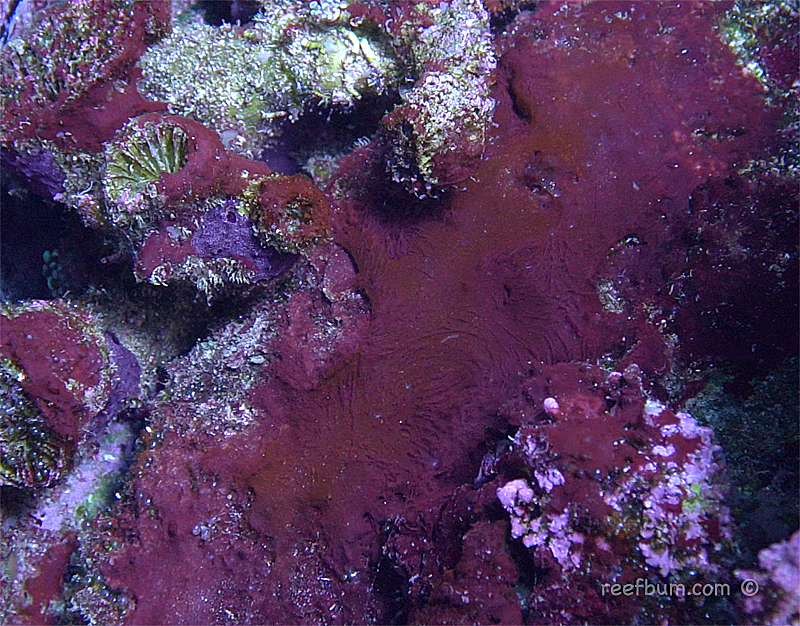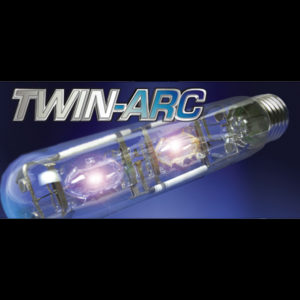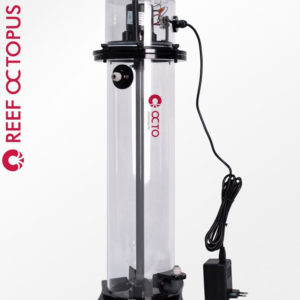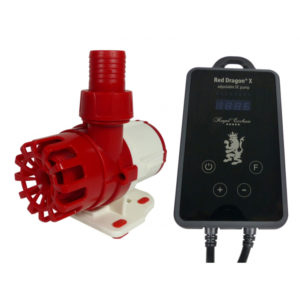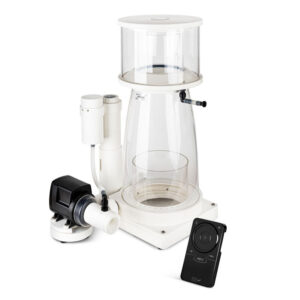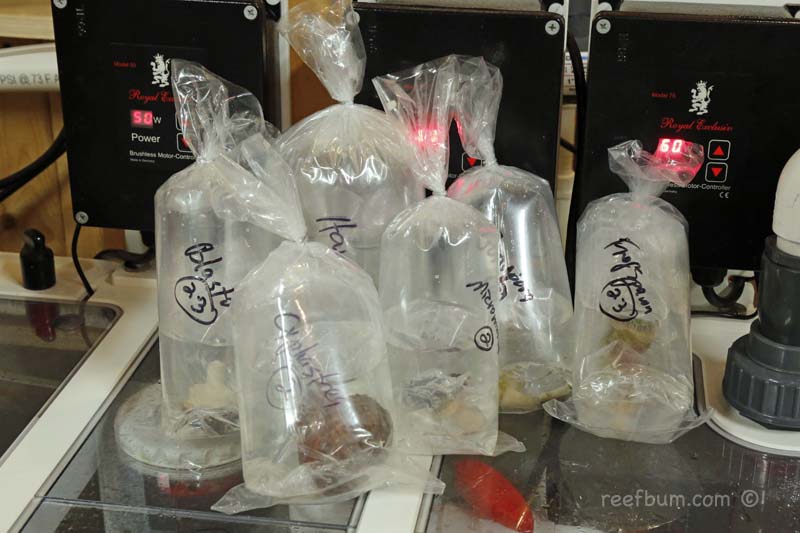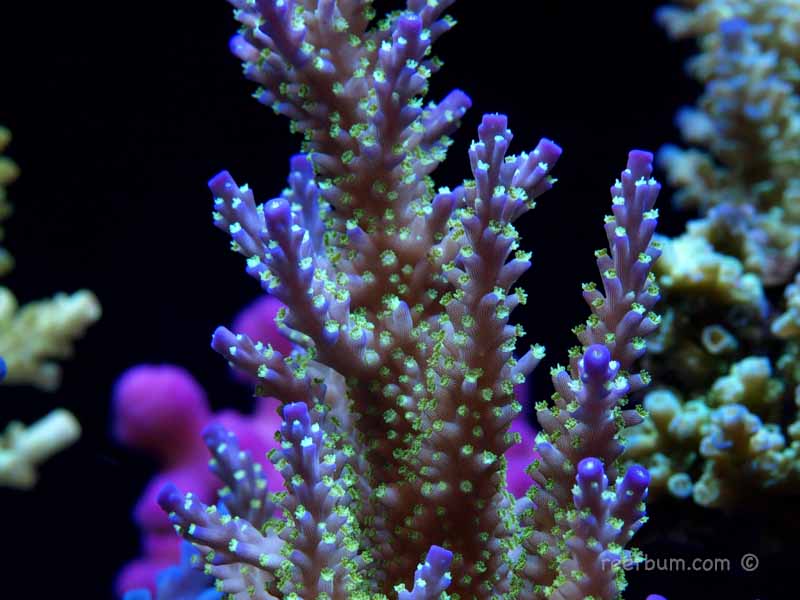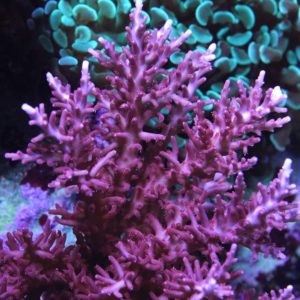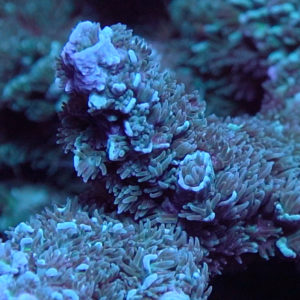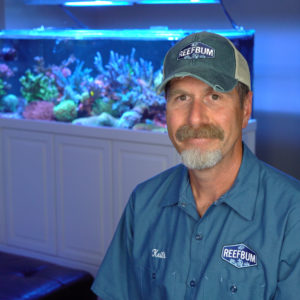What is a reef tank? In simple terms, it is an attempt to re-create a slice of the ocean in a home. These captive ecosystems contain fish, corals and invertebrates from the around the world. Each tank is unique but all strive to achieve a level of harmony that can illuminate the beauty seen in nature.
But reef tanks also contain certain unwanted pests and organisms that can derail a reef keeper’s plan to achieve success. Problematic algae is one of these roadblocks. You have two basic options when fighting algae. Fight it via natural means or use chemicals. Is the use of chemicals the best option when trying to mimic a natural reef? Let’s dig in a bit.
Options for Fighting Cyano
Cyanobacteria is one of the most common forms of problematic algae. It can rear its ugly head when excess nutrients are present. It is often referred to as a form of algae but it is actually a bacteria (cyano is short for cyanobacteria).
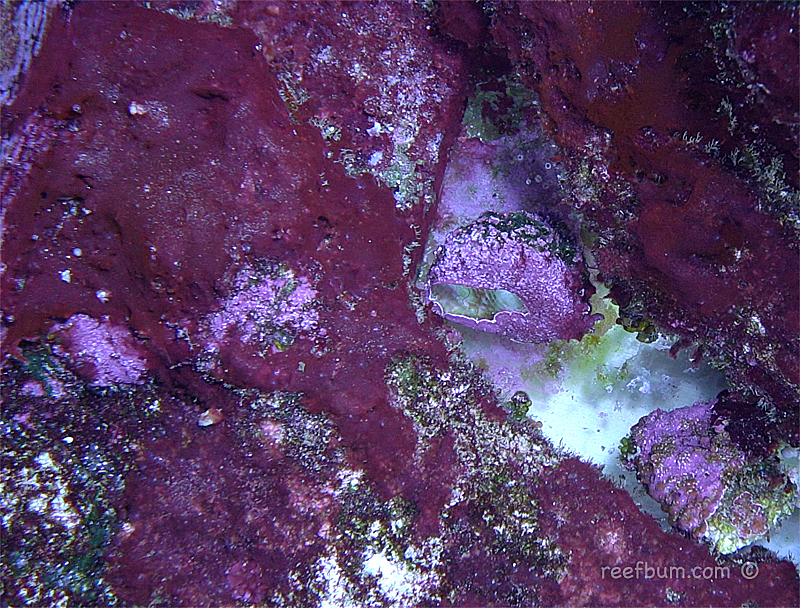
There are a number of products on the market that are designed to “nuke” cyano within a matter of days. I have used Chemiclean and it did work, although it eventually lead to an outbreak of dinoflagellates (learn how I eradicated dinos). You also have to be very diligent and follow the instructions. If you don\’t then you risk a tank crash.
Another issue when using chemicals to treat cyano is how it impacts the population of healthy bacteria in a tank. Chemiclean apparently contains erythromycin, which can kill many species of bacteria. The question is does it impact bacteria that are part of the nitrogen cycle?
Personally, I don’t want to take the chance upsetting my “good guy” bacteria population by using chemicals unless I have a major plague of cyano. I also don\’t want to create an imbalance in my tank that can lead to another problem. Perhaps this is why dinos popped up after I used Chemiclean.
The Natural Method
I advocate using natural means to rid a tank of cyano. This includes increasing flow, siphoning out as much cyano as you can, performing regular water changes, using a good skimmer, not overfeeding the tank and employing a good clean up crew. Another key is to remove as much detritus as you can.
Using a power head every now and then to blow detritus of the rocks is a great way to dislodge it and move it into the water column, where is can be removed via mechanical filtration. If you have sand, it can be helpful to siphon it to remove detritus. It is best to clean just the top layer of sand since the bottom part of a sand bed can contain toxic substances such as hydrogen sulfide. If that leaches out it could cause harm to the tank’s inhabitants.
You can also deploy certain critters like sea cucumbers, nassarius snails, crabs, conches and gobies to keep detritus in check. Detritus is much easier to remove in bare bottom tanks. In my peninsula tank a decent amount accumulates in one spot near the end viewing panel. Every week I use a hose to siphon it up. Pretty simple.
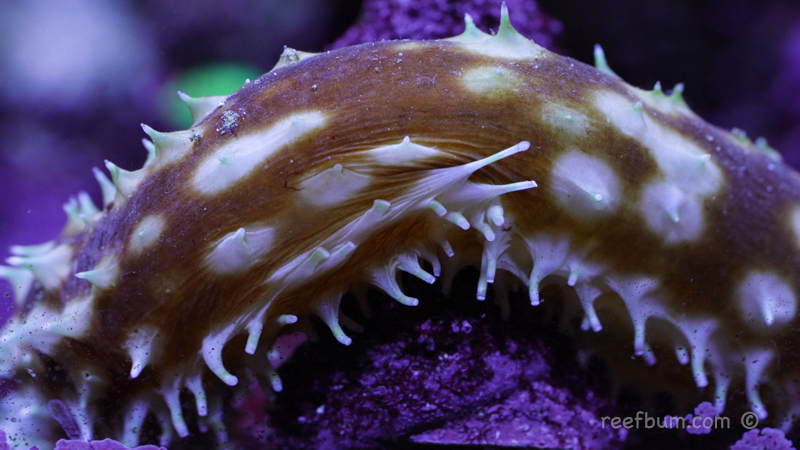
Removing Detritus
Any detritus that collects in a sump should also be removed. Detritus is dead organic matter and the accumulation of these elements can cause nitrates and phosphates to rise, leading to cyano.
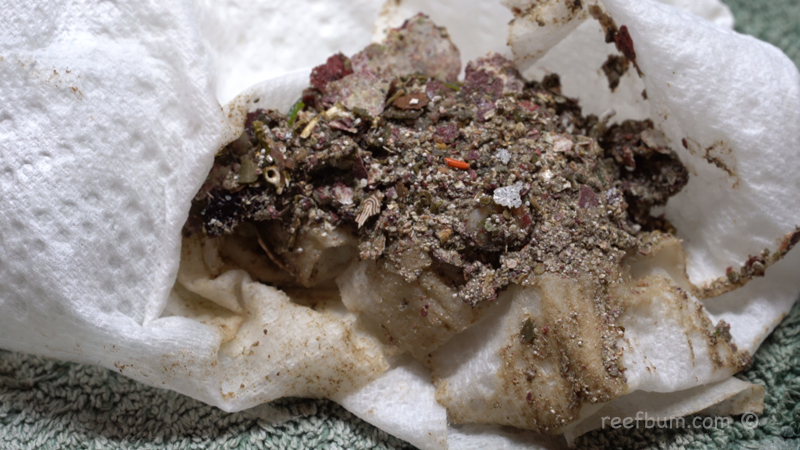
High nutrients can also cause bryopsis. This type of algae is notoriously tough to eradicate and can spread quickly if neglected. Again, chemical treatment is one way to rid a tank of bryopsis. Fluconazole has been used by a number of hobbyists to remove bryposis. Many report success but others have had issues with SPS bleaching out. Again, how does it impact the biology of the tank?
Reluctantly, I did experiment with Flucanazole and had some initial success. My bryopsis did return after a few months but I was able to eradicate it via natural means. I removed as much as possible and kept nutrients in check. Be careful not to squeeze the bryopis while removing it since spores could be released and cause it to spread. Covering up the bryopsis with a piece of rubble rock or something else is also effective.
Final Thoughts
Overall, chemicals are a band aid for a more systemic problem. Yes, they can be effective when used properly but problematic algae can return if the issue fueling the algae is not resolved. And what is the collateral damage to the tank\’s ecosystem? Do we really understand all of the negative side effects?
Using good old elbow grease to keep nutrients in check and removing algae manually are less invasive and safer paths. Remember, we are trying to achieve a level of harmony with our reef tanks to replicate what exists in nature. How much do chemicals impact this harmony and trigger other issues?
One last thing to consider is bacteria dosing. There are products out in the market that allow you to add bacteria to a tank that can potentially help clear up green, red and brown algaes. These types of products help to dissolve organic wastes in the aquarium. This is another natural method and I am just starting to experiment on this front. More to come later.
Additional Resources
If you would like some help with a new tank build, including help designing a custom aquarium, or help re-configuring your current setup then you can visit this page for more information. And if you are looking to add some equipment, I do sell GHL, Pax Bellum, Reef Octopus Calcium and Kalk Reactors and Royal Exclusiv products, including Dreamboxes, which is the equipment I use and recommend. I also sell Reef Brite metal halide and LED fixtures as well as Maxspect & IceCap Gyres.
As for additional insights and information, please explore my many other reef tank and SPS related articles as well as my YouTube channel. For an even deeper dive into reef tank care you can check out my Reef Keeping Master Class. This online course is an immersive and one of a kind educational tool designed to help reef aquarium hobbyists build and maintain a beautiful SPS reef tank. The course is a series of video presentations with some supplemental video from my YouTube channel. There are also quizzes to help students retain and understand the information presented in the course.
Need some frags…..I can help with that as well 🙂 Please visit my SPS Frag store to see what is available.

